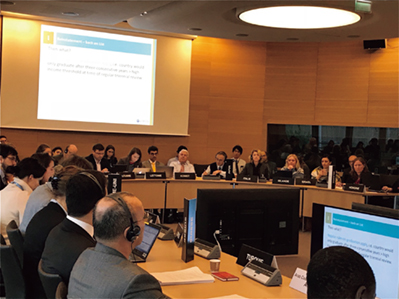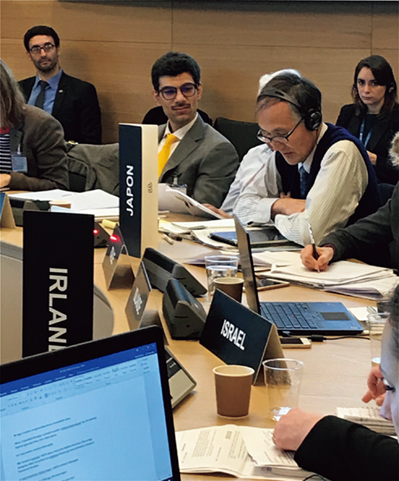ODA Topics 7
“Reporting Directives,” the Rulebook of Official Development Assistance

The DAC Working Party on Development Finance Statistics (WP-STAT) held at OECD in Paris in January 2018

The DAC Working Party on Development Finance Statistics (WP-STAT) held at OECD in Paris in January 2018
While this white paper contains various ODA statistical data, rules on what type of cooperation applies under ODA and how it should be reported are defined internationally by the OECD Development Assistance Committee (DAC). These rules are compiled under the document entitled “Reporting Directives,” of which the original English version consists of three PDF files totaling nearly 300 pages in A4 format.
According to the Reporting Directives, ODA is defined to (i) be provided by official agencies or by their executive agencies, (ii) be administered with the economic development of developing countries as its main objective, and (iii) be concessional in character (when ODA loans are provided, the loan conditions, such as interest and repayment period, must be beneficial to the borrowing country). These three requirements may be called the basic principles of ODA. The document also includes sections that provide detailed explanations on matters for which it is difficult to determine the ODA eligibility, such as administrative costs, debt relief, costs for receiving students from developing countries, and costs related to refugees in donor countries. The document also requires that when each country reports its results to the DAC, the report must include the data for each project, such as executing agency, project description, amount extended, purpose (sector) code, ODA recipient, and whether there was a specific policy goal.
The Reporting Directives were first prepared by the DAC in 1962, and have been revised as needed according to the issues faced over time. For example, the definitions of ODA listed under (i) to (iii) above were determined between 1969-1972. The current revision of the Reporting Directives was done in April 2016. The main point of the revision was the adoption of the grant equivalent measure for ODA loans beginning with the 2018 disbursements. With the existing net flow approach, all expenditures are recorded as a positive amount while all principal recovery is recorded as a negative amount, so the result will be zero if the loan is repaid on schedule. However, with the new grant equivalent measure, the predefined formula is applied to the terms and conditions of the loan to calculate the grant equivalent, which is calculated on the terms and conditions of disbursement (the more lenient the loan calculated, the larger the grant equivalent), and the repayment is not recorded as a negative amount.
The DAC Working Party on Development Finance Statistics is currently working towards the adoption of the grant equivalent measure and discussing the calculation methodology for ODA to the private sector using this new approach. Some measures are also being considered to meet contemporary demands such as contribution to Sustainable Development Goals (SDGs) and the mobilizing of a wide range of development funds including from the private sector.
